
New releases
A smarter, simpler Attentive
Explore new features →
Explore new features →

Over the last few years, consumers have experimented with new ways to shop—from e-commerce, to social commerce and hybrid experiences. As these experiments turn into habits and become embedded in our daily lives, we have more options of brands to shop with than ever before.
While this has major benefits for consumers—like online access to stores that don’t have physical locations near them—it poses a few challenges for retailers. With consumers having seemingly endless options when it comes to shopping, it’s becoming more difficult for brands to stand out from the crowd.
As shoppers continue to turn to online channels to discover new products, join communities that help them feel like themselves, and engage with their favorite brands, we think gamified commerce experiences are here to stay. Shoppers don't just want to buy, they want to be entertained.
Gamification is a strategy that incorporates gaming aspects into non-gaming contexts. Think about the fitness apps you use.
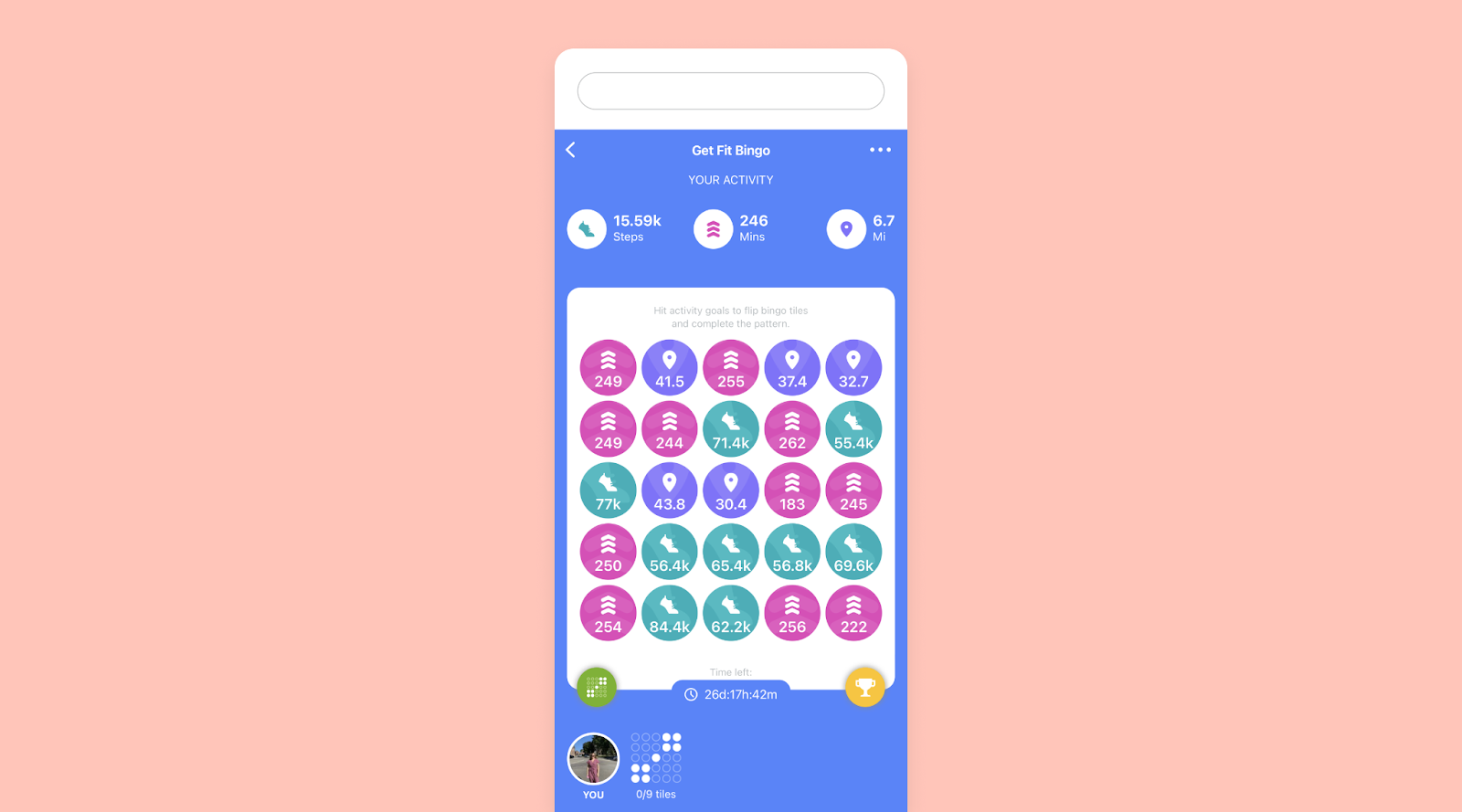
Fitbit, for example, encourages you to participate in challenges with friends, such as “Get Fit Bingo,” where you compete to see who can complete the pattern first.
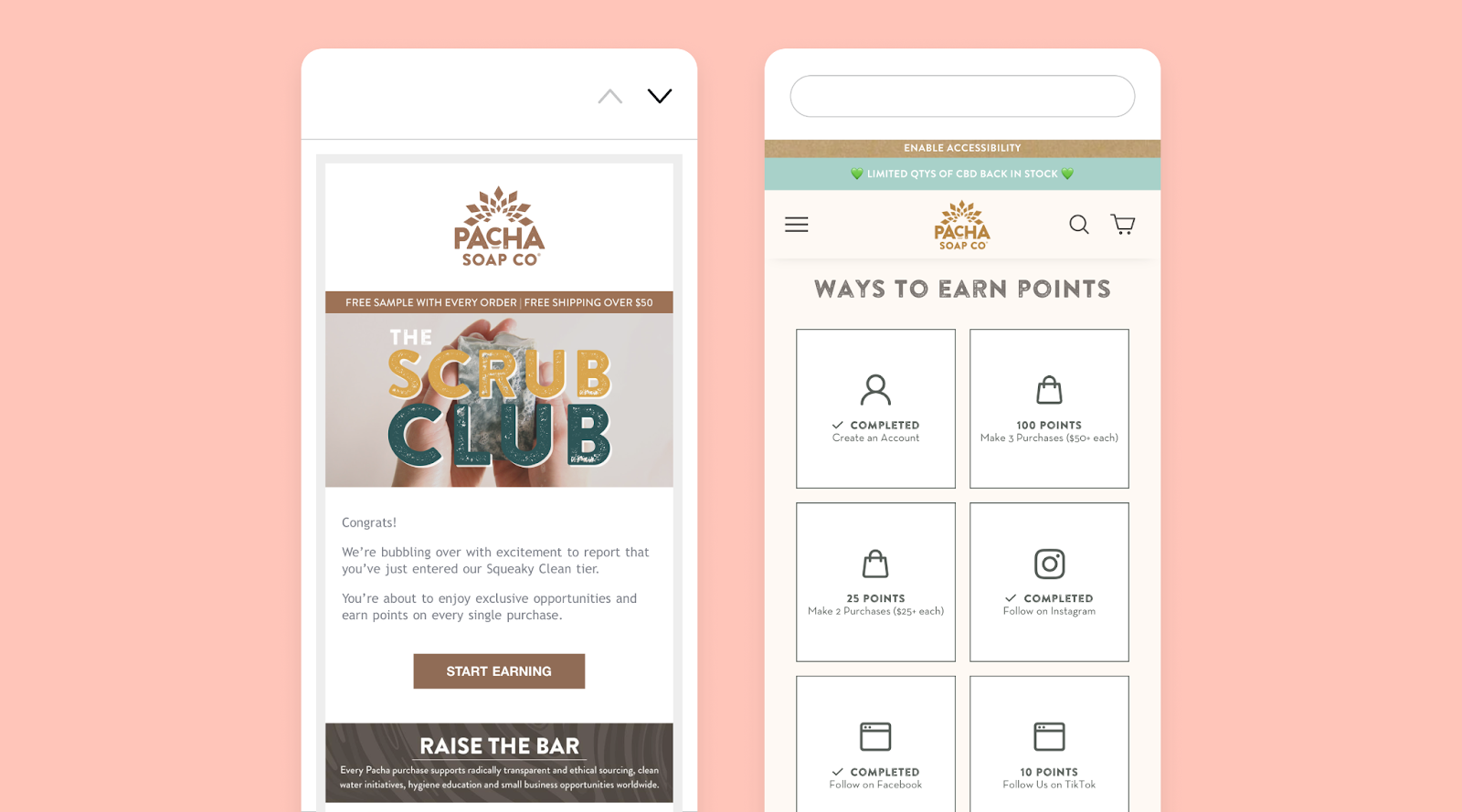
Loyalty programs are another example of gamified experiences. Most brands’ programs have loyalty tiers or levels in which the member has to complete certain tasks, or spend a specific dollar amount with the brand, to earn points and move up to the next tier.
Read more about integrating SMS into your loyalty program in our ebook, The SMS Marketer's Guide to Customer Loyalty and Retention.
People are competitive by nature—whether it’s against themselves or others. We’re easily motivated by rewards, whether they’re monetary or as simple as bragging rights.
But gamification isn’t just about the rewards; it’s a form of entertainment. As consumers are spending more time online—and on their mobile devices—creating engaging and entertaining experiences in digital spaces has become a necessity.
68% of Gen Z and 61% of Millennials consider themselves a “gamer”. As those generations—who represent 40% of the US population—are entering their prime spending years, they want shopping to entertain them, too.
Many retailers—both fast fashion and luxury brands, like Rebecca Minkoff—are seeing this as an opportunity to develop gamified mobile shopping strategies that fuel e-commerce and brand loyalty through channels such as social media and personalized text messaging.
Nearly 80% of consumers agree that “the experience a company provides is as important as its products/services.” With this shift in consumer behavior and preference, the experience economy is projected to reach $12 billion by 2023. And many brands are listening. They’re shifting their focus to deliver digital and real-life experiences that their shoppers want, instead of only concentrating on creating satisfaction with their products.
As consumers seek rewarding and enjoyable online shopping events, immersive digital experiences are becoming a key differentiator for brands who want to stand out from the competition and strengthen customer loyalty.
Timberland, for example, launched “TimbsTrails,” an interactive behind-the-scenes look at their brand’s history, showcased through stories, art, music, and people. As “players” travel through the different chapters, they collect badges to unlock the final chapter. Their end reward is a chance to win Timberland’s newest boots, along with other prizes.
Shopatainment—the combination of entertainment, commerce, and content—isn’t just another short-lived marketing trend, but a movement that’s spreading across the industry. Think livestreaming, influencer marketing, gamification, and immersive experiences.
TikTok—which has 1 billion monthly active users—already supports e-commerce features through partners like Shopify. And when Walmart tested a partnership with TikTok to host a shoppable livestream event, the brand netted 7x more views than it had anticipated and was able to grow its TikTok follower base by 25%.
We realize it’s not feasible for every brand to launch a shoppable livestream on TikTok, or to propel themselves into the metaverse to create a totally immersive experience. But there are plenty of other ways to integrate shoptainment, or gamification, on a smaller—but still effective—scale.
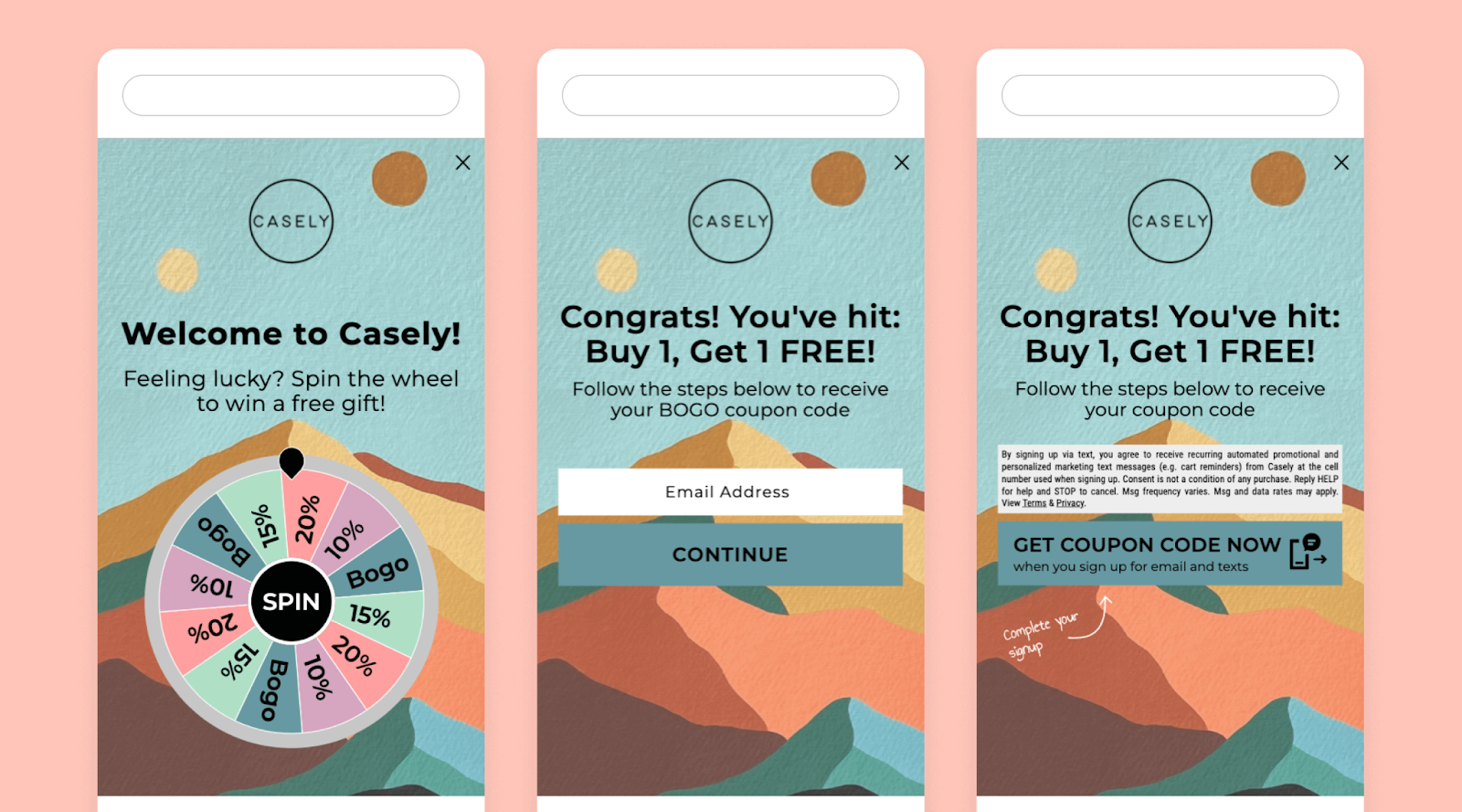
With Attentive’s Spin-to-Win sign-up units, Casely can better capture the attention of their site visitors by greeting them with a gamified opt-in experience. Maybe it’s the eye-catching nature—or the dopamine hit that comes with spinning the wheel—but many of our customers who use Spin-to-Win units see higher conversion rates on average compared to other sign-up units. Since activating their Spin-to-Win sign-up unit, Casely has seen a 60% increase in conversions.
Last St. Patrick’s Day, Groove Life used Two-Way Journeys™ to launch a fun and engaging keyword-driven scavenger hunt that engaged new subscribers and re-engaged existing subscribers. Instead of incentivizing potential SMS subscribers with a discount, Groove Life encouraged them to “Join the Hunt” by signing up for text messages.
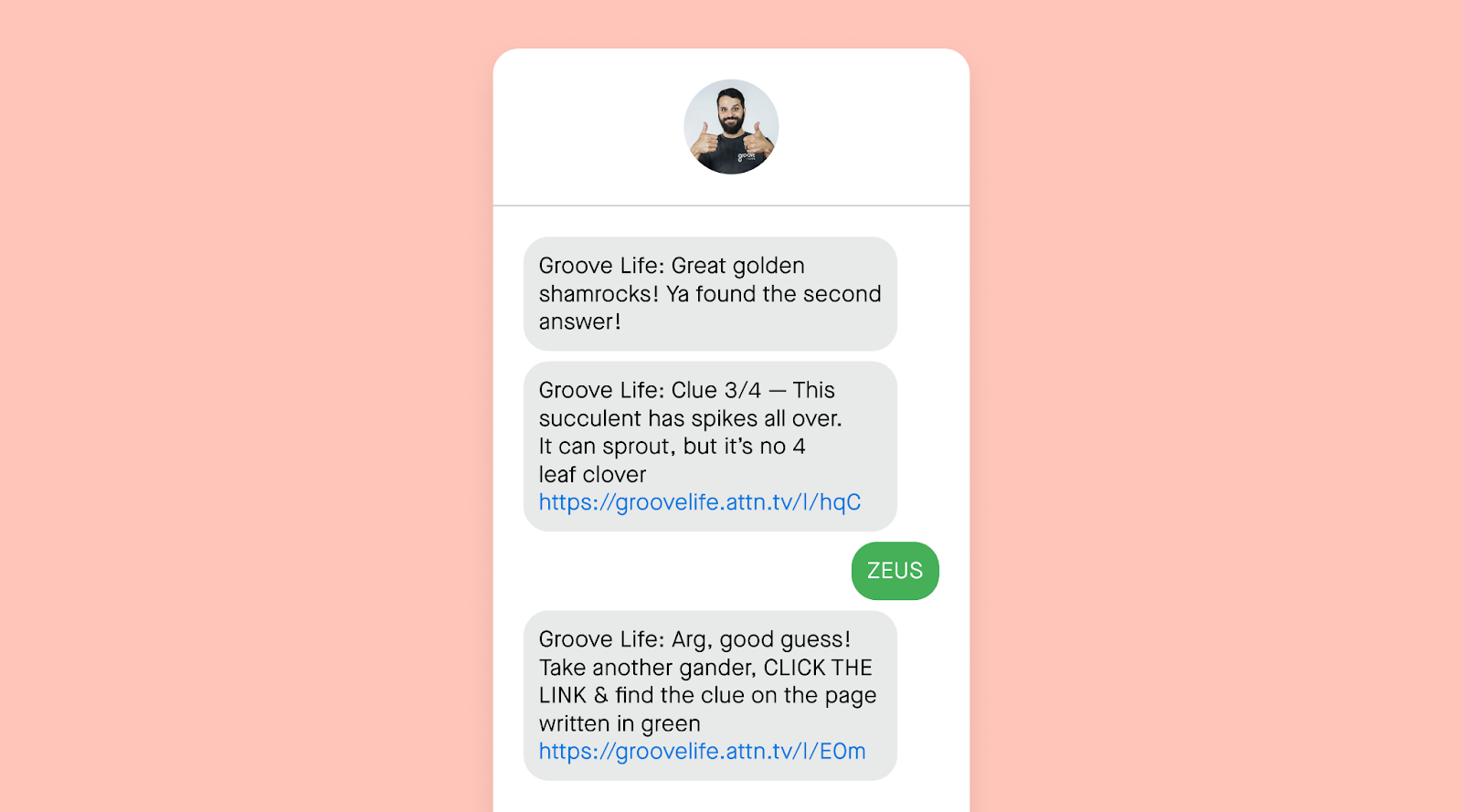
Each message in the scavenger hunt helped subscribers learn about the brand and products while rewarding them with a unique offer once they reached the end.
Some brands use SMS to drive traffic to their online quizzes in an effort to collect shopper preferences; others are conducting quizzes within the channel that they can use the results of to create relevant segments of subscribers.
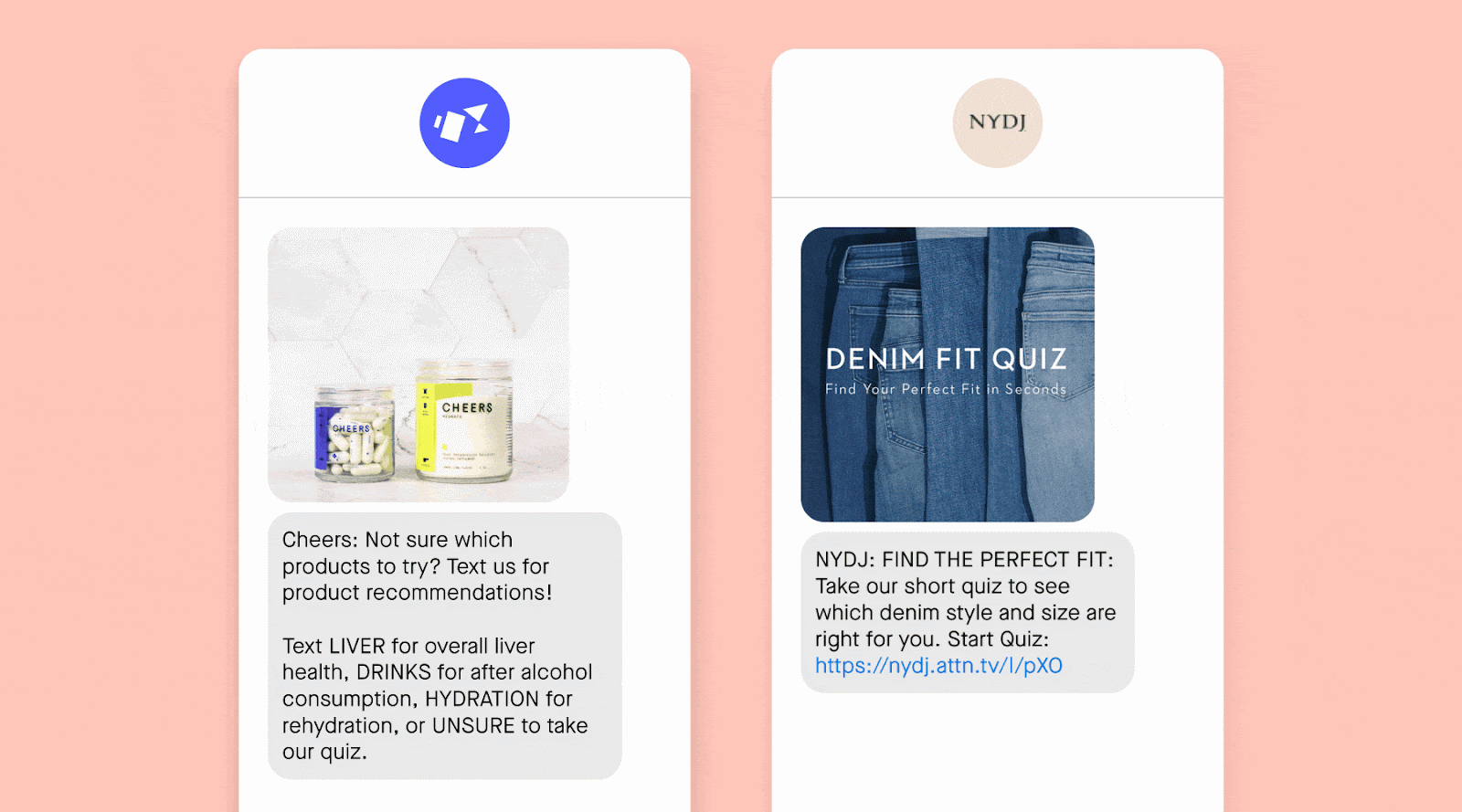
Cheers includes a few keywords in one of their automated welcome messages to help those who haven’t made a purchase yet find the right product. The subscriber can respond with a keyword to either get a personalized recommendation, or a link to take Cheers’ short online quiz.
NYDJ sent subscribers a campaign message encouraging them to take their online quiz to find the perfect fit and style.
While gamification is appealing to consumers, it’s also good for brands who are looking for new strategies to collect first- and zero-party data. In the era of constantly changing privacy and data regulations, implementing gamification can help mitigate some of the unknown, while creating the personalized and entertaining shopping experiences that shoppers want—and will soon come to expect.
Looking for more gamified text messaging inspiration? Head over to our SMS gallery, Texts We Love, for Spin-to-Win examples and Two-Way Journeys.